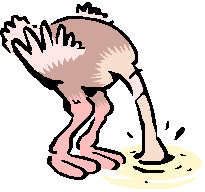 It is natural for a human being to constantly encounter problems and solve them. The quality of these solutions determines the quality of our lives, our success, happiness, health and wealth… in short, our well-( or not-so-well) -being. Making a decision, choosing one of many possibilities, finding one’s way among numerous factors and their complex interrelations is not an easy task.
It is natural for a human being to constantly encounter problems and solve them. The quality of these solutions determines the quality of our lives, our success, happiness, health and wealth… in short, our well-( or not-so-well) -being. Making a decision, choosing one of many possibilities, finding one’s way among numerous factors and their complex interrelations is not an easy task.
The MB-method is a scientific discovery in the theory of knowledge and theory of values.
All existing scientific methods, with the exception of some methods of optimization, require some initial hypothesis or concept. The goal of subsequent analyses of facts is to confirm or disprove this initial concept. This method allows to create a new, unknown concept by analyzing various factors, often seemingly unconnected. The MB-method can provide accurate analysis of factors and mechanisms which determine success or failure of any enterprise. Such analysis is not done in a metal-detector fashion where the search is conducted in a certain direction selected by the researcher, and there is always a danger of overlooking other directions, equally or more important. The MB-method is capable of covering the entire field simultaneously, picking out relevant points from all directions.
The MB-method allows the researcher to throw in doses of parameters at once, and processes all of them as an entity. A similar approach is used in some mathematical theories, such as the theory of optimization. The system utilizes the modern achievements of Sciences (Expert systems, System analysis, Systems Engineering tools, Mathematics, Theory of Value, Optimization, Quantitative Methods ,etc) but it is original in the main concept and in the way of getting knowledge. The system is also a powerful mechanism for improving mental abilities. Anything we know how to do we can do better. Anything we don’t know how to do we may be able to do.
 The main advantage and difference of the system is based on its ability of quantitative evaluation, analysis and comparison of the multitude of parameters which up till now could not be expressed in terms of quantity, such as personal tastes, preferences, etc. Besides, this method allows to establish relations between all the parameters, quantifiable as well as non-quantifiable. Most of known problem-solving methods can solve just a part of a task. But most of the time to solve only a part of the problem correctly is the same as not solving it at all. Because… “The chain is no stronger than its weakest link.”
The main advantage and difference of the system is based on its ability of quantitative evaluation, analysis and comparison of the multitude of parameters which up till now could not be expressed in terms of quantity, such as personal tastes, preferences, etc. Besides, this method allows to establish relations between all the parameters, quantifiable as well as non-quantifiable. Most of known problem-solving methods can solve just a part of a task. But most of the time to solve only a part of the problem correctly is the same as not solving it at all. Because… “The chain is no stronger than its weakest link.”
APPLIED FIELDS FOR THE MB-METHOD:
The system can be used in solving the widest range of problems, traditional as well as unusual, from serving personal purposes (educational, consumer, psychological) to such tasks as scientific research, business, politics, creating original computers games & films, etc.
The MB-method is perfectly suitable for practical application in various fields, and in a variety of ways (from one-on-one consulting to marketable software), even those for which scientific research is now considered impractical or not cost-justified.
To name just a few:
- Solving of various management and business problems: (Market Analysis Analyses of profits and expenses)
- Solving of personal problems: (Market analysis, Quality of life improvement (establishing healthy and enjoyable lifestyle, eating habits; right and pleasure diet; modes of behavior; making right decisions in selecting purchases and services, etc.)
- Developing unique educational software for sciences, arts, and other kinds of human activities.
- Creating a variety of original computer games, both entertaining and instructional, dealing with complex psychological situations, such as job interviews, personal encounters, interactions with bosses, clients, children, mother-in-law, robbers, judges.
- Creation of unique computer films where a viewers would play a key part in plot development by introducing their reactions to various situations. According to these reactions, the plot will develop in a variety of different directions, etc.
In addition, asking corresponding questions, determining the priorities of the client and establishing mathematical processing, the system arranges solutions in recommending order. If the decision does not coincide with the emotional sensation the client can find which of his responses led him to the undesirable decision (no other systems offers this).
corresponding questions, determining the priorities of the client and establishing mathematical processing, the system arranges solutions in recommending order. If the decision does not coincide with the emotional sensation the client can find which of his responses led him to the undesirable decision (no other systems offers this).
With this the client is able to look over his responses and check the new recommendation. If the answers do not arouse any doubts the client can find what psychological reasons brought him to this reading. Therefore arises a fascinating psychological game devoted to one’s self which allows to penetrate deep into one’s own sensations to better understand yourself. Experiments show that this ability often covers the main purpose of the system. The problem of choices steps to a second plan and a game begins, “Devoted to yours truly, yourself”.
